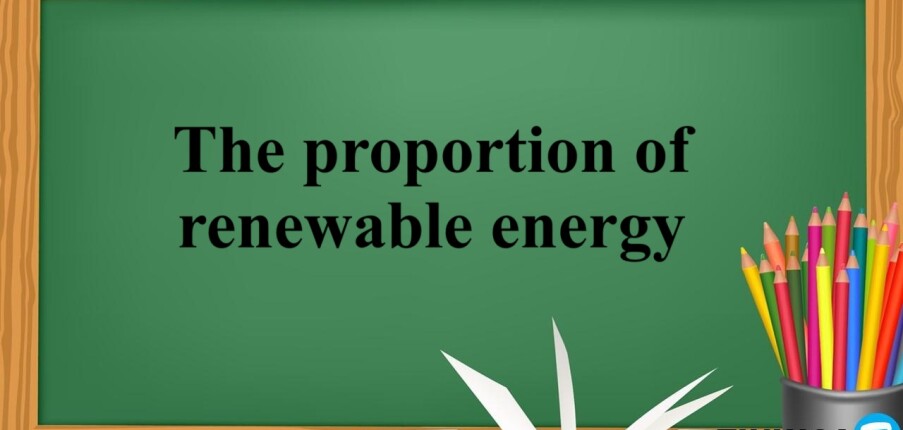The proportion of renewable energy - Đề thi IELTS Writing Task 1
Dàn bài
Introduction: Paraphrase đề bài.
- The chart → giữ nguyên.
- shows → compares…
- in 4 countries → [compares] 4 countries in terms of…
- the proportion of renewable energy in total energy supply → the ratio of renewable energy to the entire power supply.
- from 1997 to 2010 → between 1997 and 2010.
⇒ The chart compares four different nations in terms of the ratio of renewable energy to the entire power supply between 1997 and 2010.
Overview: Nhận xét những đặc điểm nổi bật (3–4 ý, bao gồm những xu hướng chính, và những điểm khác biệt).
- Iceland có tỷ lệ năng lượng tái tạo lớn nhất, đối lập với Úc và Thụy Điển.
- Trong khi Iceland và Thụy Điển ngày càng sản xuất nhiều năng lượng thay thế, Úc lại cho thấy sự suy giảm và Thổ Nhĩ Kỳ cho thấy những thay đổi trong việc này.
Details: Làm rõ những ý ở phần Overview và dẫn số liệu cụ thể.
- Paragraph 1: Xếp hạng các nước theo tỷ lệ năng lượng tái tạo (nước nào đứng ở vị trí nhất, nhì, ba, kèm theo tỷ lệ cụ thể là bao nhiêu phần trăm).
- Paragraph 2: Mô tả xu hướng thay đổi của mỗi nước (tăng, giảm, dao động hay ổn định).
Phân tích và chọn số liệu quan trọng
Iceland và Turkey:
- 1997: almost half of Iceland // Turkey at about 39%
- 2010: the wide gap between two countries // Iceland rise dramatically and peak at nearly 70% // roughly double Turkey // fall to below 35%
Sweden và Australia:
- 1997: Australia 10% // far exceed Sweden by two to one
- 2010: notable increase of around 5% in Sweden // end at about 9% // Australia plunge to the lowest // merely below 5%
Bài mẫu tham khảo
Bài mẫu band 5.5+
The table graph demonstrates the information about renewable energy in the total energy supply in 4 different countries such as Australia, Sweden, Iceland, and Turkey in the period from 1997 to 2010.
As it can be seen from the graph, the biggest part of renewable energy has Iceland during all period. However, Turkey also has a large amount of renewable energy in total. Unfortunately, the smallest percentage of renewable energy has Australia and at the same rate was the situation in Sweden.
Overall, in 1997 the highest result of renewable energy was Iceland reaching the mark of 45 per cent. A little bit less was the trend in Turkey, which reached nearly 30 per cent. Also, the proportion of renewable energy has increased rapidly in Iceland for 13 years. Moreover, the trend in Turkey had some fluctuations but had kept a position of no less than 34 per cent. As for Sweden, the situation of renewable energy has grown twice since 1997. Nevertheless, the trend of renewable energy in Australia has decreased slowly and got down to the point of the lowest position of 40 per cent in the chart.
In conclusion, countries tried to develop and include more renewable energy in total energy, with a purpose of saving our environment and predicting climate change. But all countries made it in their own way.
Bài mẫu band 6.5+
The bar chart illustrate the proportion of power energy in Australia, Sweden, Iceland and Turkey between 1997 and 2010. As can be seen, Iceland has get a highest percentage of renwable energy.Will , Australia and sweden have nearly same and Less number.
It is clear that, In Iceland thir is incresed in 2010 around 70%. whill in 2000 it decreased in to 60 %.In addition, In 1997 it were power energy drop to 45%. Moreover, In Turkey thir were increased around same nerly same number over the years. The rising were in 2000 around 40% whill in 1997 they were less in one Point nerly 39% .In 2010 start fell in to 31%
On the other hand, in Austrailia and Sweden have the same number. In Australia In 1997 the number of proportion were less than 10% and through two years droped to nerly 1%. However, In sweden were proportion in 1997 around 2% and grow to under 10%.
To sum up, we could say that, Iceland thir were increased overe the years while in Australia were decreased.
Bài mẫu band 7.0+
The bar chart provides information about the proportion of renewable energy in total energy in four different countries, such as Australia, Sweden, Iceland, and Turkey from 1997 to 2010.
Overall, there were fluctuating numbers of renewable power between the four different countries. Firstly, the total experienced upward in Iceland and Sweden. However, Iceland had the highest percentage, it started from about 45% in 1997, then increased to 60% in 2000, and continued towards 70% in 2010. While Sweden also had an increasing trend, and the count was the smallest compared to the others. Secondly, Turkey tends to fluctuate in small amounts, it had nearly 40% in 1997, then increased to 40% in 2000, but decreased to almost 30% in 2010.
On the other hand, the total of green energy in Australia experienced downward from 1997 until 2010. The amount of renewable power in Australia was under 10% in 1997, and always decreased to almost 5% in 2010.
Bài mẫu band 7.5+
The chart compares four different nations in terms of the ratio of renewable energy to the entire power supply between 1997 and 2010.
In general, Iceland was the country whose energy supply comprised the largest proportion of renewable power, in contrast to Australia and Sweden. Another salient feature that the statistics display is the distinct overall trends. While Iceland and Sweden increasingly produced alternative energy, Australia showed a decline and Turkey showed variations in this.
In particular, renewable energy accounted for 45% (in 1997) up to 70% (in 2010) of Iceland’s power resource, while the maximum figures recorded for Australia and Sweden never exceeded 10%. Turkey, where renewable power covered 33% – 40% of the total energy source, came second.
Regarding growth in alternative energy generation, only Iceland and Sweden witnessed growing patterns, with an extensive rise of 25% for the former and a slight one of 3% for the latter. Australia, however, dropped further behind due to a decrease of about 3%, whereas Turkey saw fluctuations between 32% and 40%.
Bài dịch:
Biểu đồ so sánh bốn quốc gia khác nhau về tỷ lệ năng lượng tái tạo trên toàn bộ nguồn cung cấp năng lượng từ năm 1997 đến năm 2010.
Nhìn chung, Iceland là quốc gia có nguồn cung cấp năng lượng với tỷ lệ năng lượng tái tạo lớn nhất, trái ngược với Úc và Thụy Điển. Một đặc điểm nổi bật khác mà số liệu thống kê hiển thị là các xu hướng chung khác biệt. Trong khi Iceland và Thụy Điển ngày càng sản xuất nhiều năng lượng thay thế, Úc lại cho thấy sự suy giảm và Thổ Nhĩ Kỳ cho thấy những thay đổi trong việc này.
Cụ thể, năng lượng tái tạo chiếm 45% (năm 1997) cho đến 70% (năm 2010) nguồn năng lượng của Iceland, trong khi con số tối đa được ghi nhận ở Úc và Thụy Điển chưa bao giờ vượt quá 10%. Thổ Nhĩ Kỳ, nơi năng lượng tái tạo chiếm 33% – 40% tổng nguồn năng lượng, đứng thứ hai.
Về tăng trưởng trong sản xuất năng lượng thay thế, chỉ Iceland và Thụy Điển chứng kiến các mô hình tăng trưởng, với mức tăng mạnh là 25% đối với quốc gia trước và mức tăng nhẹ 3% đối với quốc gia sau. Tuy nhiên, Úc tụt lại xa hơn nữa do giảm khoảng 3%, trong khi Thổ Nhĩ Kỳ dao động trong khoảng từ 32% đến 40%.
Bài mẫu band 8.0+
The bar chart compares the percentage of renewable energy in four different nations’ grand energy production between 1997 and 2010. In general, while a downturn was recorded in the proportion of renewable energy in Australia and Turkey, the reverse applied to that of Sweden and Iceland. Noticeably, Iceland consistently boasted the highest usage of renewable sources for its energy supply during the surveyed period.
Regarding the two leading countries, in 1997, almost half of Iceland’s total energy came from renewable sources, closely followed by the figure for the latter, at about 39%. By contrast, the following 13 years witnessed the widening the gap between these two countries. Specifically, the proportion of renewable energy in Iceland continued to rise dramatically and reached it peak of nearly 70% in 2010, roughly doubling that in Turkey, which fell to just below 35%.
Turning to the two remaining nations, renewable energy constituted approximately 10% of total energy supply in Australia in 1997, far exceeding the figure for Sweden by two to one. During the next 13 years, a notable increase of around 5% was registered in the percentage of renewable energy in Sweden to end at about 9%, whereas that in Australia plunged to the lowest figure of merely below 5% in 2010.
Một số từ vựng highlight
- In terms of something [linking phrase]: used to show what aspect of a subject you are talking about or how you are thinking about it (về lĩnh vực/vấn đề gì).
- Ratio [n]: the relationship between two groups of people or things that is represented by two numbers showing how much larger one group is than the other (tỷ lệ).
→ Ratio of A to B (e.g. the ratio of renewable energy to the entire power supply).
- Comprise something [v]: to have somebody/something as parts or members (bao gồm).
- Salient [adj]: most important or easy to notice (nổi bật).
- Statistics [n, plural]: a collection of information shown in numbers (số liệu thống kê).
- Distinct [adj]: clearly different or of a different kind (khác biệt).
- Variation [n]: a change, especially in the amount or level of something (sự thay đổi).
- Exceed something [v]: to be greater than a particular number or amount (vượt quá).
- Extensive [adj]: covering a large area; great in amount (rộng, lớn).
- Drop behind [phr.v.]: to move or fall into position behind somebody else (lùi/tụt lại phía sau).
Xem thêm các tài liệu Tiếng Anh hay, chi tiết khác:
TOP Việc làm "HOT" dành cho sinh viên:



